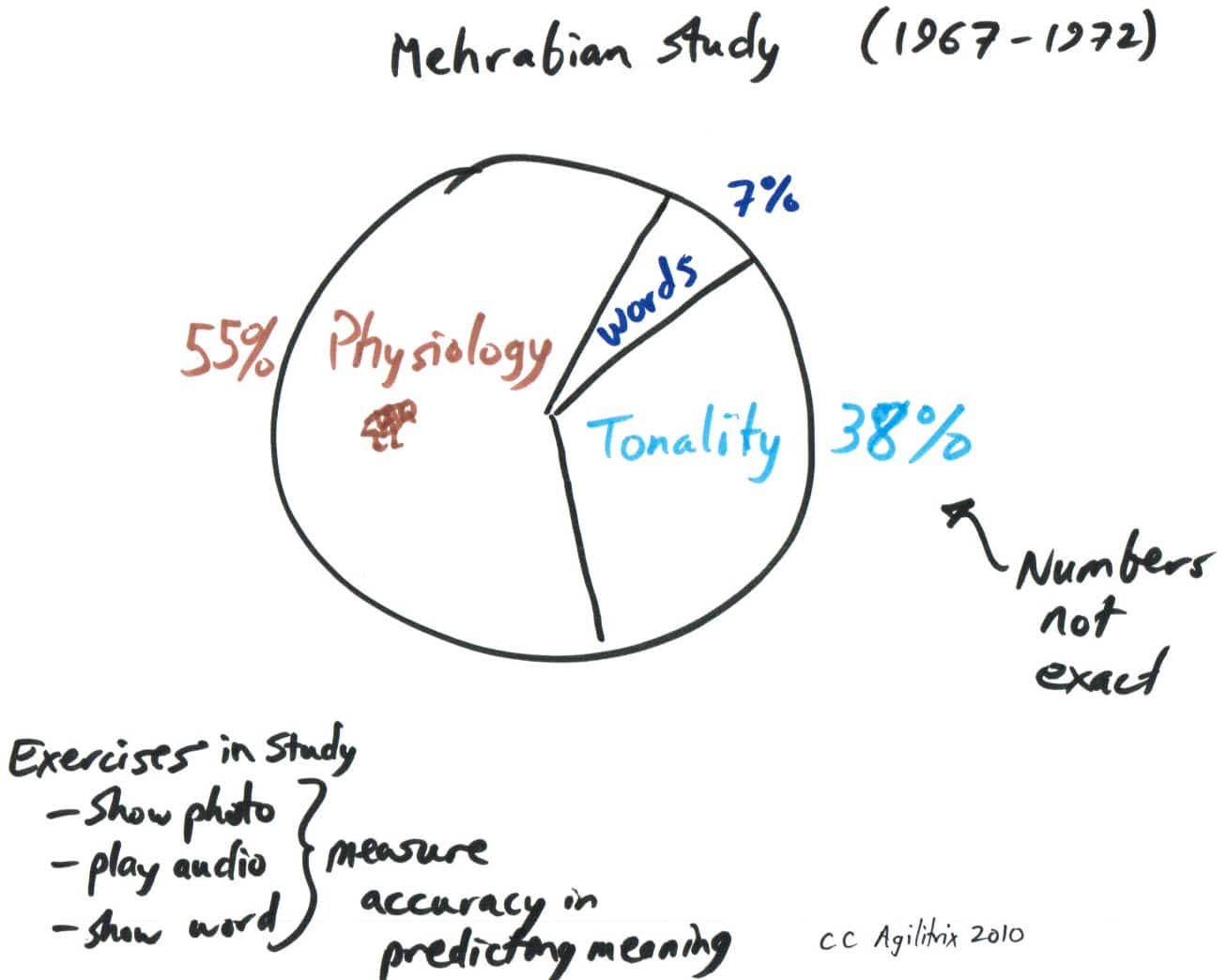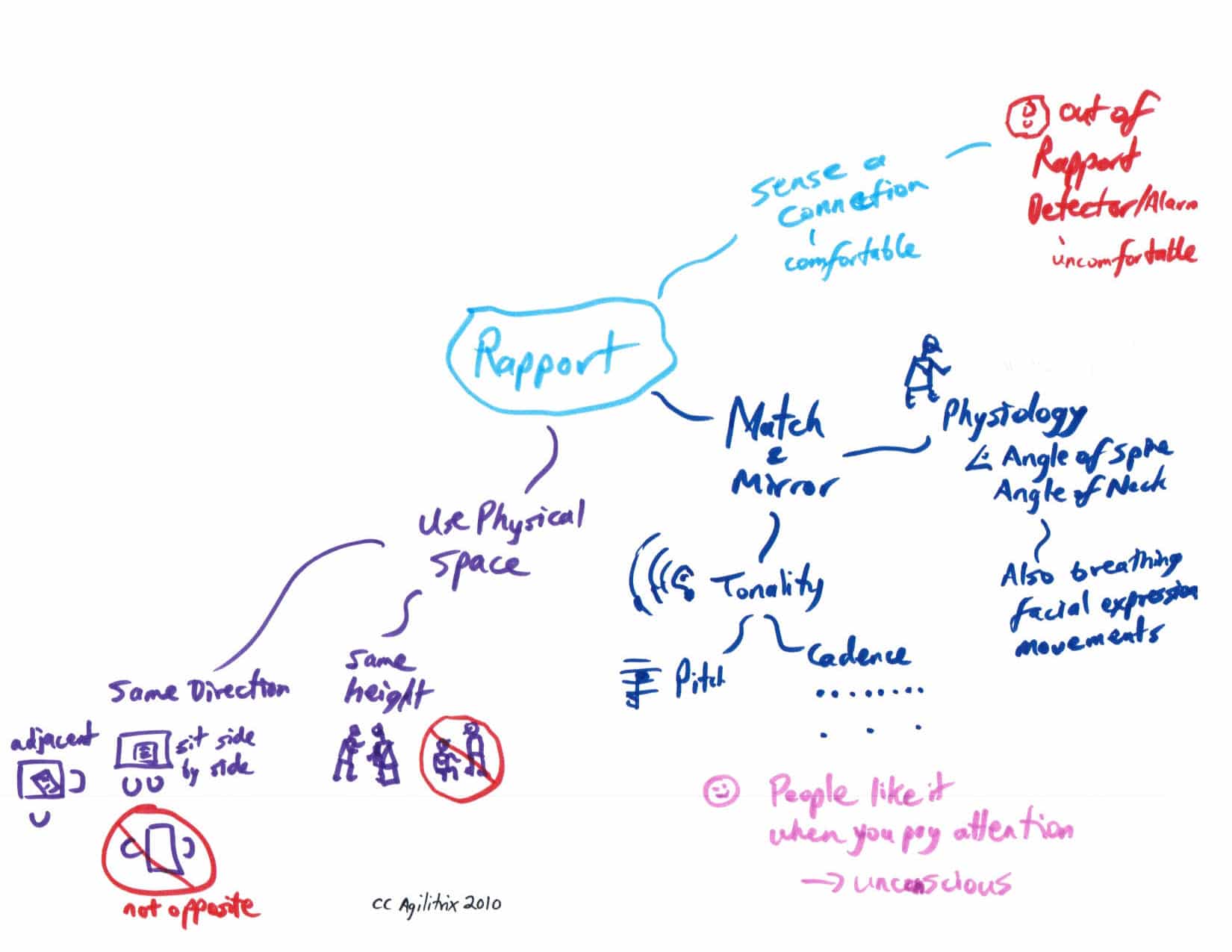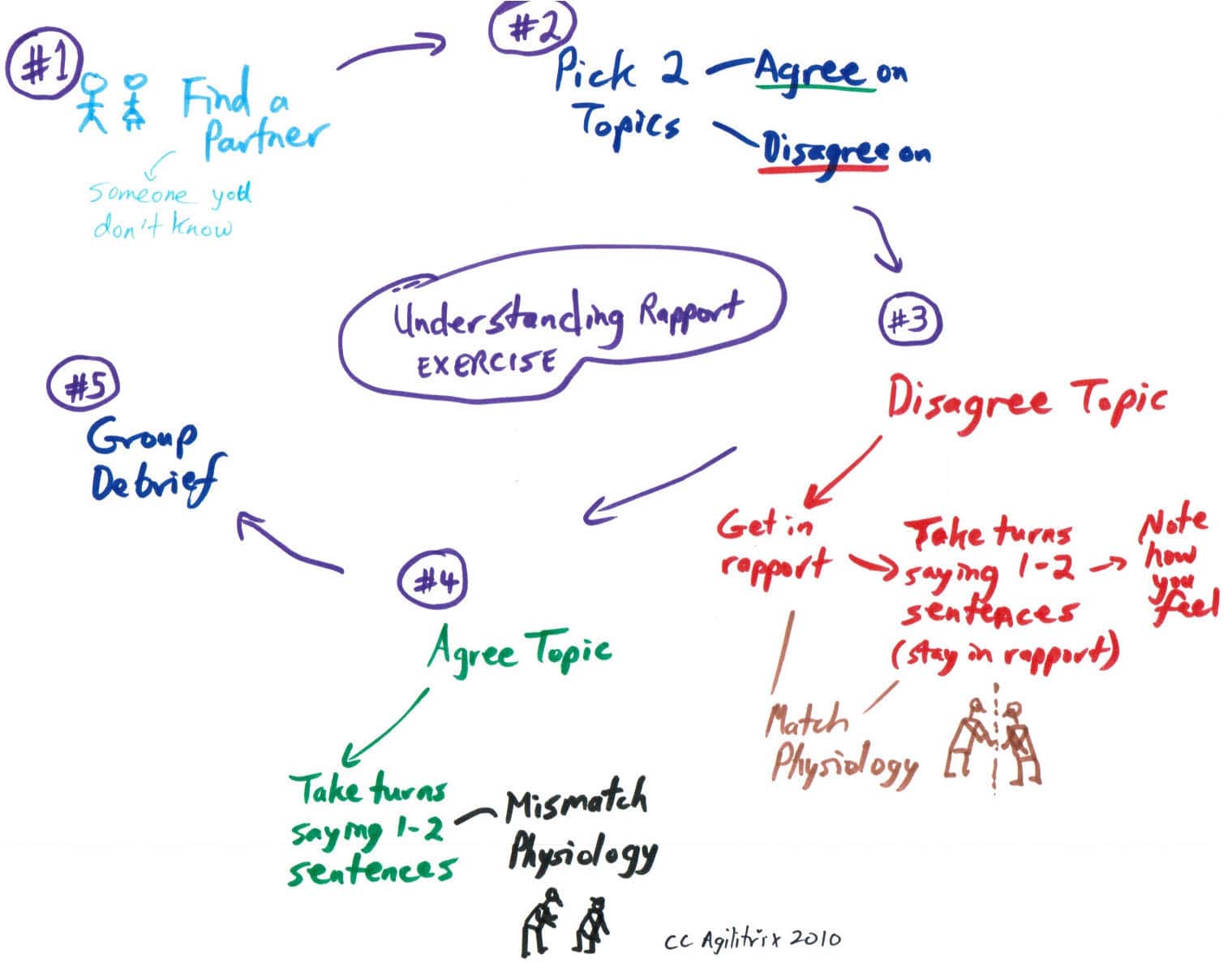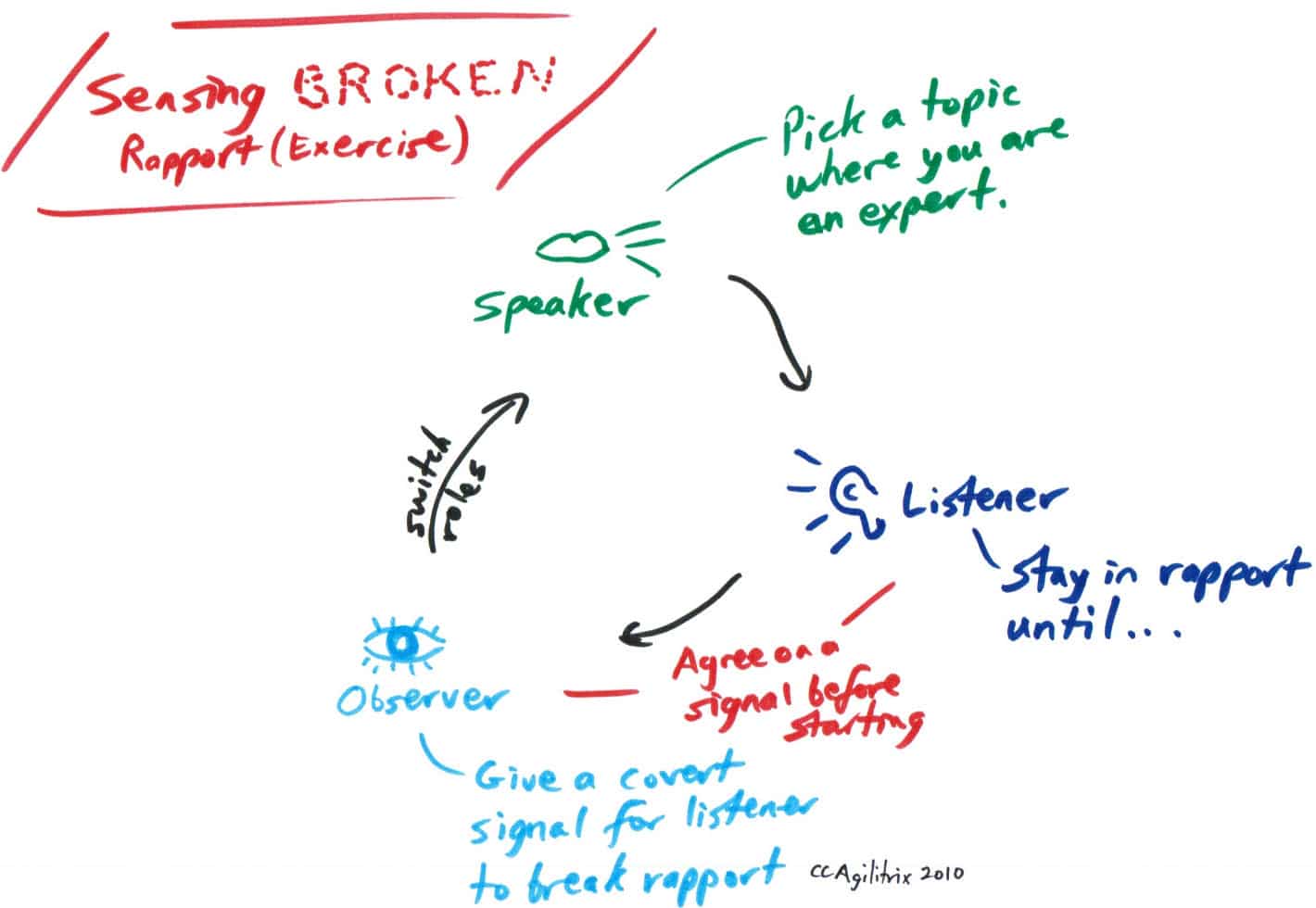At Scrum Gathering Orlando, I ran an experiential workshop titled Improve your communication through non-verbal rapport. The session turned out really well so thanks to everyone who participated. My only tools were a flip chart and some markers, so the purpose of this post is to provide details for attendees as well as provide visibility to anyone interested in better communication.
(Part 6 of 5 blogs on the Scrum Gathering in Orlando – ok, so not very good at counting) 😉
Mehrabian Study

Amazingly, only 7% of communication is based on words while 38% is based on tonality and 55% on physiology.
The Mehrabian Study produced these numbers to quantify the importance of non-verbal communication.
Rapport

Briefly, rapport is about making and feeling a connection with another person. We do this automatically with our friends: we match physiology and tonality. The key practice for connecting with others is to:
- Face a similar direction
- Be at the same or lower height
- Match the angle of their spine and head tilt.
This goes a long way towards making a comfortable connection. For more on rapport refer to NLP: The New Technology of Achievement by Steve Andreas, and Charles Faulkner.
Keys to great communication
There are some important approaches that complement non-verbal rapport skills.
I just posted on Crucial Conversations.
 Stephen Covey’s “7 Habits of Highly Effective People” has two models that relate to effective communication.
Stephen Covey’s “7 Habits of Highly Effective People” has two models that relate to effective communication.
Win/Win is about seeking a good outcome for everyone involved – seeking a long-term, sustainable relationship.
“Seek first to understand, then be understood“ is about really listening to people around you. To really connect, you need to understand the person and where they are coming from.
Exercise to understand rapport
Caution: These exercises are here for those who attended the workshop and want to use them to help others. Please attend a workshop before trying these on your own.
This exercise is about getting an internal sense of how important rapport is in conversation.

Exercise to sense broken rapport
This exercise is about practicing rapport and getting a sense of what it is like for rapport to be broken.

Want to learn more?
These are some of the skill that I learned as an NLP (NeuroLinguisticProgramming) Practitioner. I have found Practitioner as well as Master Practitioner skills to be an important part of my toolkit as an Agile Coach.
I strongly recommend Wauneen McMonagle Innergize Training if you are interested in building skills in this area.


